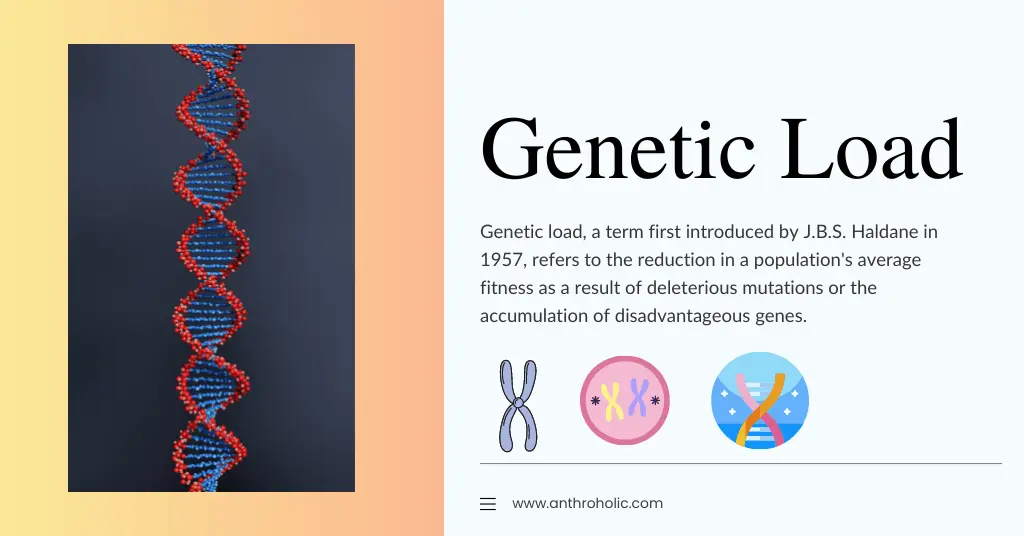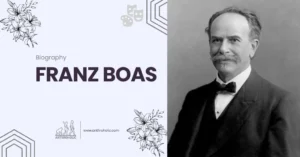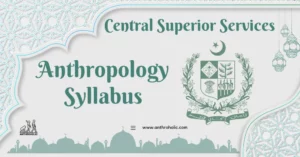AI Answer Evaluation Platform Live Now. Try Free Answer Evaluation Now
Genetic Load
Genetic load, a term first introduced by J.B.S. Haldane in 1957, refers to the reduction in a population’s average fitness as a result of deleterious mutations or the accumulation of disadvantageous genes [8]. This concept is critical for understanding how populations evolve and adapt, as well as for predicting potential threats to population survival. Genetic load encompasses several different types, including mutation load, segregation load, and substitution load, each with distinct implications for population genetics and evolutionary biology.

Evolution of the Concept of Genetic Load
The term genetic load was first conceptualized by British geneticist J.B.S. Haldane in the mid-20th century. Haldane proposed the idea of a “cost of natural selection” or a genetic burden that populations bear due to selection pressures [15].
Motoo Kimura, a Japanese theoretical population geneticist, expanded on Haldane’s work by introducing the neutral theory of molecular evolution in 1968. This theory proposes that most evolutionary changes are the result of genetic drift acting on neutral mutations rather than selection acting on beneficial mutations. This view underscored the potential role of genetic load in shaping population diversity [16].
Later, Russian geneticist Alexey Kondrashov presented the concept of “synergistic epistasis,” which suggests that the harmful effects of individual mutations can amplify when they occur together, adding a new layer to our understanding of genetic load [17].
Notable Figures and their Contributions
Haldane, Kimura, and Kondrashov are three of the most notable figures in the history of genetic load, each contributing significantly to our understanding of the concept. Their theories continue to shape modern research in the field.
Haldane’s pioneering work established the foundation for the concept of genetic load. Kimura’s neutral theory revolutionized our understanding of molecular evolution, including the role of genetic load. Kondrashov’s theory of synergistic epistasis offered insights into how multiple mutations might interact to affect a population’s genetic load.
Types of Genetic Load
Mutation Load
- Result of deleterious mutations that lower a population’s average fitness [10].
- Affected by mutation rates, selection coefficients, and population size [1].
Segregation Load
- Caused by the maintenance of polymorphic alleles, where both alleles are maintained in a population due to balancing selection [3].
- Affected by balancing selection mechanisms, such as frequency-dependent selection, overdominance, and fluctuating selection [7].
Substitution Load
- Result of fixation of slightly deleterious alleles, which can lower the population’s average fitness [14].
- Affected by population size, selection coefficients, and genetic drift [2].
Factors Influencing Genetic Load
- Mutation rate: The rate at which new mutations arise in a population [13].
- Selection coefficients: The fitness effects of the various genotypes [5].
- Population size: Larger populations tend to have a lower genetic load due to more efficient selection and lower levels of genetic drift [4].
- Environmental changes: Rapid environmental changes can increase genetic load by favoring previously deleterious alleles or causing novel deleterious mutations [9].
| Type of Genetic Load | Definition | Influencing Factors |
|---|---|---|
| Mutation Load | Reduction in fitness due to deleterious mutations | Mutation rates, selection coefficients, population size |
| Segregation Load | Fitness reduction caused by maintenance of polymorphic alleles | Balancing selection mechanisms |
| Substitution Load | Fitness reduction due to fixation of slightly deleterious alleles | Population size, selection coefficients, genetic drift |
Implications of Genetic Load
- Population Viability: High genetic load can compromise population survival by reducing average fitness and increasing the risk of extinction [12].
- Inbreeding Depression: Inbreeding can increase genetic load by increasing the frequency of homozygous deleterious alleles [4].
- Evolutionary Processes: Genetic load can influence the rate of adaptation and the efficiency of natural selection in a population [11].
- Conservation Strategies: Understanding genetic load is essential for designing effective conservation strategies to maintain genetic diversity and promote population survival [6].
The Relevance of Genetic Load in Anthropology
Genetic load plays a significant role in human evolution, a topic at the core of anthropological studies. It can influence the rate of evolution, population diversity, and survival. It’s also essential in understanding human adaptation to various environments, migration patterns, and how social structures and culture have interacted with human genetics over time.
For example, researchers have found evidence of genetic load influencing life-history traits in human populations, such as fertility and mortality rates. Additionally, anthropologists examine genetic load when studying how past events such as population bottlenecks or the Neolithic demographic transition affected our species.
In medical anthropology, genetic load is important in understanding the distribution and prevalence of various genetic diseases across different populations. This can provide insights into health disparities and the potential for personalized medicine based on genetic background.
Finally, as technology evolves, anthropologists are interested in how modern interventions, such as genetic engineering, might alter our genetic load in the future and the ethical considerations this brings.
The Interplay between Genetic Load and Anthropological Theories
Anthropology and genetic load intersect on various fronts. One key intersection is in the study of human evolution. For instance, the “Out of Africa” theory proposes that modern humans evolved in Africa and then migrated outwards, which would have influenced the distribution of genetic load across human populations [18].
Another intersection comes in the study of societal structures and behaviors. The social structures of early human societies, such as kinship systems and mating patterns, would have influenced the distribution and frequency of harmful mutations, thereby impacting genetic load.
Finally, anthropological theories on culture and technology intersect with genetic load in the modern era. For example, advancements in medical technology and public health measures can influence genetic load by reducing the selective pressures acting on certain harmful mutations.
Genetic Load and Evolution
Role in Natural Selection and Genetic Drift
Genetic load can influence the direction and speed of evolution through its interactions with natural selection and genetic drift.
Natural Selection: Genetic load represents the pool of deleterious mutations that natural selection can act upon. Populations with a higher genetic load can, paradoxically, have a higher potential for evolution if they possess a greater number of harmful mutations that can be eliminated by selection.
Genetic Drift: Genetic drift, random changes in allele frequencies, can significantly affect genetic load in small populations. Genetic drift can increase genetic load by allowing deleterious mutations to become fixed (reach a frequency of 100%) in a population due to random chance, especially in small, isolated populations.
Impact on Population Fitness
A population’s genetic load can significantly impact its fitness, often leading to a decrease in average individual fitness. High genetic load can affect the survival and reproductive success of individuals within the population, potentially leading to population decline or extinction if the genetic load becomes too high.
Genomic Complexity and Genetic Load
The relationship between genomic complexity and genetic load is a topic of ongoing research. On the one hand, organisms with more complex genomes can harbor more deleterious mutations, which could lead to a higher genetic load. On the other hand, greater genomic complexity can buffer against the harmful effects of mutations, potentially lowering the genetic load. For instance, redundancy in genetic information (such as duplicate genes) can mitigate the harmful effects of deleterious mutations.
Potential Strategies to Minimize Negative Effects of Genetic Load
Genetic load can impose substantial burdens on population fitness and adaptive potential. The following strategies may help to minimize these negative effects:
- Enhancing Genetic Diversity: One of the most effective strategies to minimize genetic load is to increase genetic diversity within a population. A diverse gene pool allows natural selection to act more efficiently on harmful mutations, increasing the chances that these will be purged from the population.
- Outbreeding: Outbreeding, or mating between unrelated individuals, can help to reduce genetic load by decreasing the frequency of harmful recessive alleles that are expressed when homozygous. This can be particularly effective in small, inbred populations where harmful recessive alleles are common.
- Genome Editing Technologies: Recent advancements in genome editing technologies like CRISPR-Cas9 offer potential strategies for directly reducing genetic load. By targeting and correcting specific harmful mutations, these technologies could help to lower genetic load. However, the ethical and ecological implications of such interventions need careful consideration.
- Conservation Management: In conservation biology, strategies such as assisted migration, managed relocation, or translocation can be employed to introduce new genetic variation into isolated or dwindling populations, helping to reduce their genetic load and increase their resilience.
- Public Health Measures: In human populations, public health measures like genetic screening and counseling can help to reduce the genetic load associated with hereditary diseases. These strategies can enable individuals to make informed decisions about reproduction, potentially decreasing the frequency of certain harmful mutations in the population.
Conclusion
Genetic load is a crucial concept in understanding population genetics and evolutionary biology, with significant implications for population viability, inbreeding depression, and conservation strategies. By examining the different types of genetic load and the factors that influence them, researchers can better predict the consequences of genetic load for populations and develop strategies to mitigate its effects.
FAQs about Genetic Load
References
[1] Agrawal, A. F., & Whitlock, M. C. (2012). Mutation load: the fitness cost of deleterious mutations. Journal of evolutionary biology, 25(5), 1030-1042.
[2] Charlesworth, B. (1994). The effect of background selection against deleterious mutations on weakly selected, linked variants. Genetical Research, 63(3), 213-227.
[3] Charlesworth, B., & Charlesworth, D. (1987). Inbreeding depression and its evolutionary consequences. Annual review of ecology and systematics, 18(1), 237-268.
[4] Charlesworth, D., & Willis, J. H. (2009). The genetics of inbreeding depression. Nature Reviews Genetics, 10(11), 783-796.
[5] Crow, J. F. (1970). Genetic loads and the cost of natural selection. In Mathematical Topics in Population Genetics (pp. 128-177). Springer, Berlin, Heidelberg.
[6] Frankham, R. (1995). Conservation genetics. Annual review of genetics, 29(1), 305-327.
[7] Gillespie, J. H. (1979). An extension of the stochastic model for the balance between mutation pressure and natural selection in a population. Theoretical population biology, 15(2), 158-169.
[8] Haldane, J. B. S. (1957). The cost of natural selection. Journal of Genetics, 55(3), 511-524.
[9] Hoffmann, A. A., & Sgrò, C. M. (2011). Climate change and evolutionary adaptation. Nature, 470(7335), 479-485.
[10] Kimura, M., & Crow, J. F. (1964). The number of alleles that can be maintained in a finite population. Genetics, 49(4), 725-738.
[11] Kirkpatrick, M., & Jarne, P. (2000). The effects of a bottleneck on inbreeding depression and the genetic load. The American Naturalist, 155(2), 154-167.
[12] Lande, R. (1994). Risk of population extinction from fixation of new deleterious mutations. Evolution, 48(6), 1460-1469.
[13] Lynch, M., Conery, J., & Bürger, R. (1999). Mutation accumulation and the extinction of small populations. The American Naturalist, 146(4), 489-518.
[14] Maynard Smith, J. (1976). Haldane’s dilemma and the rate of evolution. Nature, 264(5582), 201-202.
[15] Haldane, J. B. S. (1957). The cost of natural selection. Journal of Genetics, 55(3), 511-524.
[16] Kimura, M. (1968). Evolutionary rate at the molecular level. Nature, 217(5129), 624-626.
[17] Kondrashov, A. S. (1995). Contamination of the genome by very slightly deleterious mutations: why have we not died 100 times over? Journal of theoretical biology, 175(4), 583-594.
[18] Cavalli-Sforza, L. L., Menozzi, P., & Piazza, A. (1994). The history and geography of human genes. Princeton university press.




